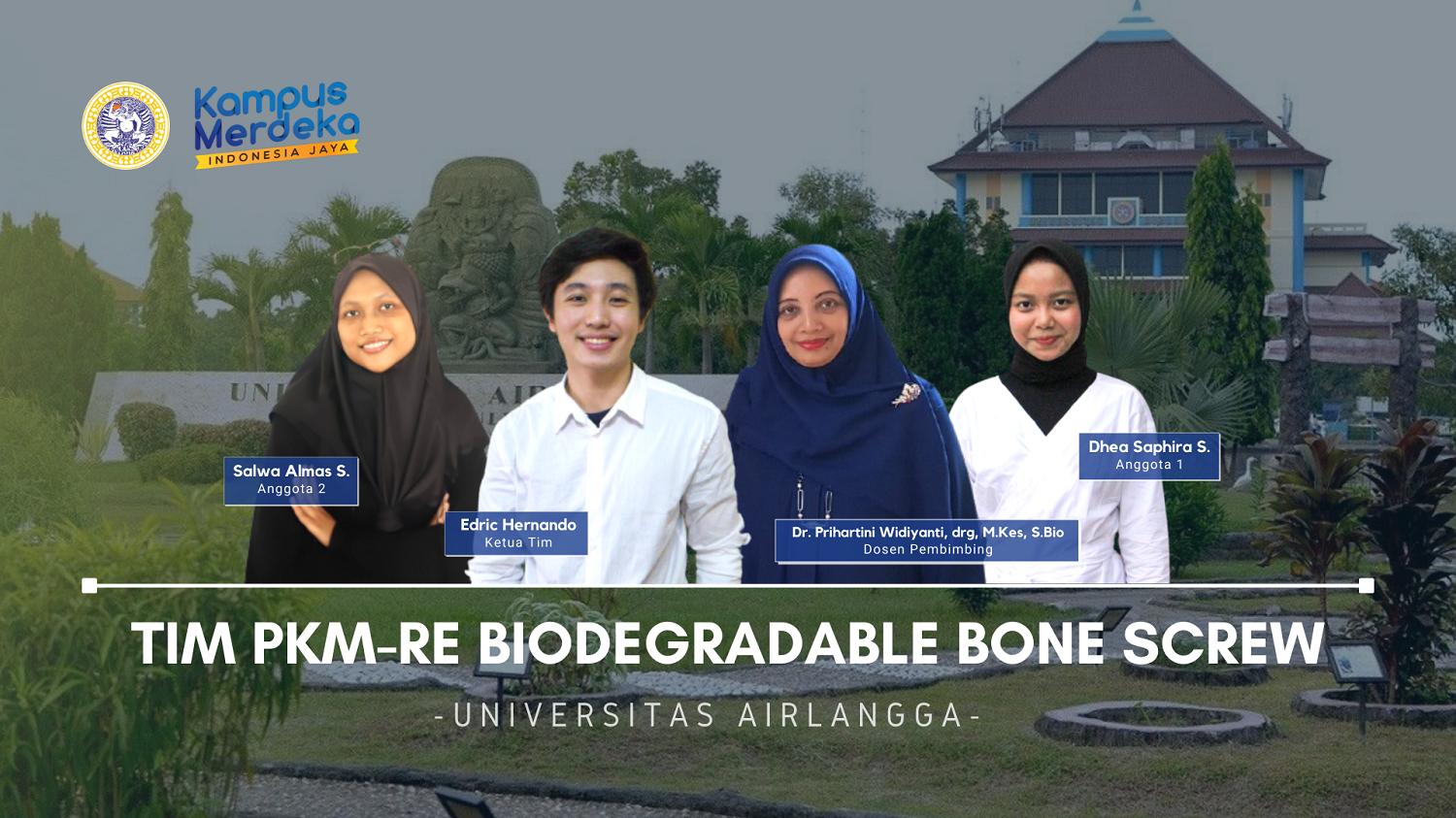UNAIR NEWS- Traffic accidents cause a high number of fractures which is quite alarming. Based on the WHO (World Health Organisation) data in 2011, traffic accidents have caused 1.3 million people to suffer fractures. In Indonesia, fracture fixation devices commonly used are imported fixation devices made of non-biodegradable metal materials and often require a second operation. It causes expensive health care costs and increases the chances of infection and complications.
Therefore, three students of Biomedical Engineering of the Faculty of Science and Technology Universitas Airlangga, Edric Hernando, Dhea Saphira Salsabila, and Salwa Almas Shalihah, under the guidance of Dr. Prihartini Widyanti, drg. M.Kes, S.Bio conducted research to make one of the fracture fixation devices, Biodegradable Bone Screw using a biocomposite material, Poly(Octanediol-co-Citrate)-Hydroxyapatite (POC-HA).
The research succeeded in obtaining funding in the 2021 Student Creativity Program (PKM) organized by the Ministry of Research, Technology, and Higher Education (KEMENRISTEK DIKTI).

“The idea for this research emerged after we conducted research and saw the potential for developing bone fixation devices in June 2021. Even though we had difficulty conducting experimental activities, we still try to innovate by conducting online research using finite element software in the research data collection,” said Edric Hernando as the team leader.
The finite element analysis software, ANSYS 2021, was chosen because it can predict the application of POC-HA polymer materials to human bone tissue. The prediction process begins with creating a 3D Bone Screw model using CAD software, Inventor 2020.
After that, the input of secondary data related to the materials used and the incorporation of models is carried out in the ANSYS 2021 software. Then, mathematical calculations and simulations are processed to produce the material’s mechanical characteristics, one of the most important factors in fracture fixation.

Salwa, one of the group members, explained that the mechanical characterization results through simulations on software showed characterization results close to the reference literature carried out experimentally. Furthermore, it has the advantage of seeing the simulation results of the deformation of the POC-HA material, which is quite good in repairing fractures.
As predicted, it can be said that POC-HA biocomposite material can be studied using the finite element analysis method and has good potential as a candidate for a biodegradable bone screw for fracture repair. It proves that the pandemic condition is not a barrier to innovation, as we can utilize technology that facilitates research. Furthermore, it shows the potential of software such as finite element analysis in future research to accelerate research in analyzing other materials for bone repair effectively and efficiently. (*)





